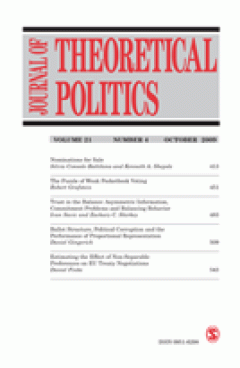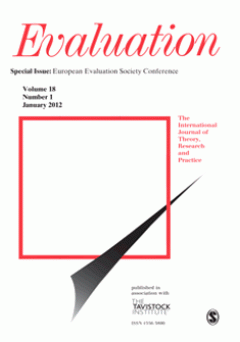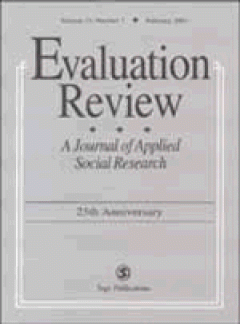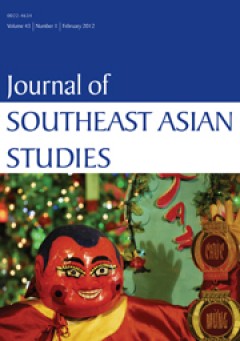Filter by

Rational incompetence
When something goes awry in a governmental agency, a frequent claim is that appointed political heads are incompetent. If true, what explains this in a separation of powers system where the executive nominates and the legislature approves? Our analysis provides a rationale and conditions for rational incompetence. Specifically, we present a model in which a President nominates and the Senate co…
- Edition
- Vol. 24 no. 1, January 2012,pp. 3-18
- ISBN/ISSN
- 09516298
- Collation
- -
- Series Title
- Journal of Theoretical Politics
- Call Number
- -

The lesser evil : Executive accountability with partisan supporters
We develop a model of electoral accountability with primaries. Prior to the general election, the supporters of each of two parties decide which candidates to nominate. We show that supporters suffer from a fundamental tension: while they want politicians who will faithfully implement the party’s agenda in office, they need politicians who can win elections. Accountability to supporters fails w…
- Edition
- Vol. 24 no. 1, January 2012,pp. 19-45
- ISBN/ISSN
- 09516298
- Collation
- -
- Series Title
- Journal of Theoretical Politics
- Call Number
- -

A model of political information-processing and learning cooperation in the r…
A model of political information processing drawn from the studies of political behavior and psychology is applied to the emergence of cooperation observed in classic repeated Prisoner’s Dilemma (PD) game experiments. The results show that the model can robustly account for the learning of cooperation observed in the experiments when players are aware of the strategic nature of the game and mak…
- Edition
- Vol. 24 no. 1, January 2012,pp. 46-65
- ISBN/ISSN
- 09516298
- Collation
- -
- Series Title
- Journal of Theoretical Politics
- Call Number
- -

Modeling the commons as a game with vector payoffs
Since Hardin first formulated the tragedy of the commons, researchers have described various ways that commons problems are solved, all based on the model of individual rationality. Invariably, these institutional solutions involve creating some system of property rights. We formulate an alternative model, one not founded on property rights but on decision-making around so-called vector payoffs…
- Edition
- Vol. 24 no. 1, January 2012 ,pp. 66-89
- ISBN/ISSN
- 09516298
- Collation
- -
- Series Title
- Journal of Theoretical Politics
- Call Number
- -

Greater than the sum of their parts? When combinations of institutions improv…
Many scholars show that institutions help citizens with their political decisions. However, real-world contexts contain multiple institutions that are imposed together. Thus, I develop a theory and experimental test of the conditions under which combinations of two institutions induce citizens to trust a speaker’s statements and make better decisions than when only one institution is present. T…
- Edition
- Vol. 24 no. 1, January 2012,pp. 90-109
- ISBN/ISSN
- 09516298
- Collation
- -
- Series Title
- Journal of Theoretical Politics
- Call Number
- -

One man, one vote, one time? A model of democratization in the Middle East
The protests associated with the 2011 Arab Spring represent a serious and sustained challenge to autocratic rule in the Middle East. Under what conditions will Arab protest movements translate into a full-fledged ‘fourth wave’ of democratization? We argue that questions about the commitment of Islamic political opposition to democracy beyond a country’s first free election may hinder Middle Eas…
- Edition
- Vol. 24 no. 1, January 2012,pp. 110-146
- ISBN/ISSN
- 09516298
- Collation
- -
- Series Title
- Journal of Theoretical Politics
- Call Number
- -

The mixing of methods : A three-step process for improving rigour in impact e…
This article describes a systematic process that is helpful in improving impact evaluation assignments, within restricted budgets and timelines. It involves three steps: a rethink of the key questions of the evaluation to develop more relevant, specific questions; a way of designing a mix of research methods to generate evidence that supports more valid conclusions; and a step that aims to make…
- Edition
- Vol. 18 no. 1, January 2012,pp. 5-25
- ISBN/ISSN
- 13563890
- Collation
- -
- Series Title
- Evaluation
- Call Number
- -

Purposes and criteria in network governance evaluation : How far does standar…
Evaluation and network governance are both among the top-10 trendy concepts in public policy. But how are they related? In the present article, we ask how public sector interventions guided by a network governance doctrine are to be evaluated. If evaluation means systematic judgment of organization, content, administration, outputs and effects in public policy, then evaluators need concepts and…
- Edition
- Vol. 18 no. 1, January 2012,pp. 27-46
- ISBN/ISSN
- 13563890
- Collation
- -
- Series Title
- Evaluation
- Call Number
- -

The political economy of joint-donor evaluations
Part of the justification for joint-donor evaluations is that they allow the conduct of relevant evaluations with a broader scope than single-donor evaluations and at the same time reduce transaction costs. Many joint-donor evaluations, however, run into management and coordination problems, have unforeseen high transaction costs for the donors and result in general conclusions and recommendati…
- Edition
- Vol. 18 no. 1, January 2012,pp. 47-59
- ISBN/ISSN
- 13563890
- Collation
- -
- Series Title
- Evaluation
- Call Number
- -

Evaluation models and evaluation use
The use of evaluation results is at the core of evaluation theory and practice. Major debates in the field have emphasized the importance of both the evaluator’s role and the evaluation process itself in fostering evaluation use. A recent systematic review of interventions aimed at influencing policy-making or organizational behavior through knowledge exchange offers a new perspective on evalua…
- Edition
- Vol. 18 no. 1, January 2012,pp. 61-77
- ISBN/ISSN
- 13563890
- Collation
- -
- Series Title
- Evaluation
- Call Number
- -

Evaluating complex and unfolding interventions in real time
This article discusses an approach to managing the evaluation of complex interventions. Complex interventions pose significant challenges to the role and conduct of evaluations. In particular, they combine with reflexive learning and change to produce significant uncertainties making it hard to describe in advance what the intervention will do or what the outcomes might be. These uncertainties …
- Edition
- Vol. 18 no. 1, January 2012,pp. 79-91
- ISBN/ISSN
- 13563890
- Collation
- -
- Series Title
- Evaluation
- Call Number
- -

The challenges to effective outcome evaluation of a national, multi-agency in…
This article uses the example of Sure Start, a national initiative introduced by the UK Government in the late 1990s, as a case study to explore the reasons why large-scale, complex, national initiatives often fail to adequately evidence the impact of their work. The authors explore a range of structural, cultural, methodological and practical factors that have acted to inhibit effective evalua…
- Edition
- Vol. 18 no. 1, January 2012,pp. 93-109
- ISBN/ISSN
- 13563890
- Collation
- -
- Series Title
- Evaluation
- Call Number
- -

Cyber society and digital policies : Challenges to evaluation?1
In this article, the authors explore the relationship between (impact) evaluations and cyber society, in particular digital policies. There appears to be a gap between the pace at which internet and digital policies are penetrating society and the attention professional evaluators are paying to these policies. First, we present an analytical framework for studying these policies, while examples…
- Edition
- Vol. 18 no. 1, January 2012,pp. 111-127
- ISBN/ISSN
- 13563890
- Collation
- -
- Series Title
- Evaluation
- Call Number
- -

Evaluating NGO-capacity development interventions : Enhancing frameworks, fit…
Capacity development support of Southern partners has become a cornerstone of the work of many Northern development NGOs. While there is a growing consensus in the aid sector about the importance of capacity development (CD), the support base among the general public and policy makers for these kinds of activities is weak. This is linked with the observed difficulties of demonstrating the relev…
- Edition
- Vol. 18 no. 1, January 2012,pp. 129-150
- ISBN/ISSN
- 13563890
- Collation
- -
- Series Title
- Evaluation
- Call Number
- -

Evaluation of the “Lose Your Excuse” Public Service Advertising Campaign …
This study evaluates the 2008–2009 “Lose your Excuse” public service advertising (PSA) campaign on energy efficiency targeting 8- to 12-year-olds, intended to increase knowledge, foster proactive attitudes, and change energy usage behaviors. Baseline and two follow-up surveys were conducted with online samples representative of the national population of households with kids with online access.…
- Edition
- Vol. 35 no. 5, October 2011,pp. 455-489
- ISBN/ISSN
- 0193841X
- Collation
- -
- Series Title
- Evaluation Review
- Call Number
- -

Using Interviews to Understand the Assignment Mechanism in a Nonexperimental …
Many inquiries regarding the causal effects of policies or programs are based on research designs where the treatment assignment process is unknown, and thus valid inferences depend on tenuous assumptions about the assignment mechanism. This article draws attention to the importance of understanding the assignment mechanism in policy and program evaluation studies, and illustrates how informati…
- Edition
- Vol. 35 no. 5, October 2011,pp. 490-522
- ISBN/ISSN
- 0193841X
- Collation
- -
- Series Title
- Evaluation Review
- Call Number
- -

Stuck Inside the Federal-Indian Funding Relationship : A Tale of Two Evaluations
Two case studies are presented to compare and contrast the challenges encountered when attempting to conduct participatory evaluations (P-Es) with tribal programs that represented two extremes of collaboration between the programs and evaluators. In one case, the P-E was successful because the principals were invested in the program, whereas in the second case, the absence of a shared program v…
- Edition
- Vol. 35 no. 5, October 2011,pp. 523-549
- ISBN/ISSN
- 0193841X
- Collation
- -
- Series Title
- Evaluation Review
- Call Number
- -

Linearity and Nonlinearity in HIV/STI Transmission : Implications for the Eva…
A mathematical model of HIV/sexually transmitted infections (STI) transmission was used to examine how linearity or nonlinearity in the relationship between the number of unprotected sex acts (or the number of sex partners) and the risk of acquiring HIV or a highly infectious STI (such as gonorrhea or chlamydia) affects the utility of sexual behavior change measures as indicators of the effecti…
- Edition
- vol. , 35 no. 5, October 2011,pp. 550-565
- ISBN/ISSN
- 0193841X
- Collation
- -
- Series Title
- Eval Rev October
- Call Number
- -

The legend of King Prajadhipok : Tall tales and stubborn facts on the seventh…
The figure of King Prajadhipok (r. 1925–35), Siam's last absolute monarch, remains of great significance to Thailand's contemporary political discourse. King Prajadhipok's historical role as the ‘founding father’ of Thai democracy, in particular, lies at the heart of the Chakri dynasty's claim to democratic legitimacy — a claim that is now widely questioned, both at home and abroad. This articl…
- Edition
- Vol. 43, No. 1, February 2012,pp. 4-31
- ISBN/ISSN
- 00224634
- Collation
- -
- Series Title
- Journal of Southeast Asian Studies
- Call Number
- -

Passing over in silences : Ideology, ideals and ideas in Thai translation
This article explores English–Thai translations of ‘political ideology’. It traces the evolution of the Thai term udomk?n and discusses how the complexity of the foreign discourse was reflected in its Thai counterpart. There was a conflation of ‘idea’ and ‘ideal’. Udomk?n is a uniquely Thai word, translations of which have never been stable. The contemporary political conflict is analysed throu…
- Edition
- Vol. 43, No. 1, February 2012,pp. 32-54
- ISBN/ISSN
- 00224634
- Collation
- -
- Series Title
- Journal of Southeast Asian Studies
- Call Number
- -
 Computer Science, Information & General Works
Computer Science, Information & General Works  Philosophy & Psychology
Philosophy & Psychology  Religion
Religion  Social Sciences
Social Sciences  Language
Language  Pure Science
Pure Science  Applied Sciences
Applied Sciences  Art & Recreation
Art & Recreation  Literature
Literature  History & Geography
History & Geography